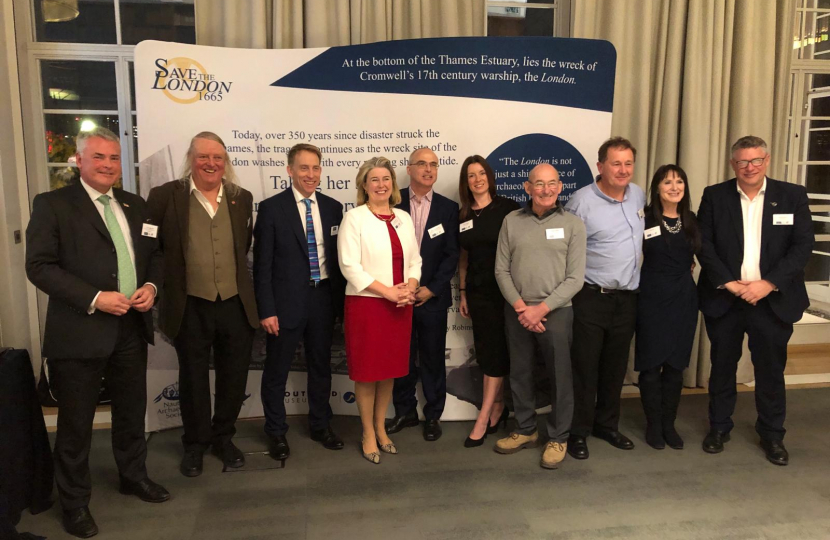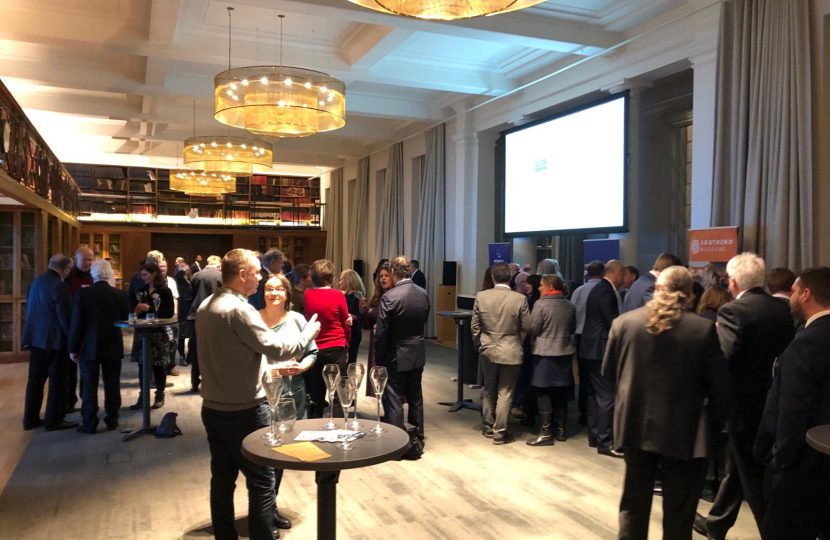On Thursday 7th March I attended an event to raise awareness of the wreck of the London, a 17th century warship, situated at the bottom of the Thames Estuary in Southend.
The event marked the anniversary of the sinking of the London when on 7th March 1665 the ship catastrophically blew up in the Thames killing over 300 people, men and women who were on board before the ship went to war. The London was on Historic England’s top 10 archaeological discoveries of the last decade.
Clearly a significant historic asset from the 17th century, with direct connections to Cromwell, Charles II, James II and Samuel Pepys. But despite that it is one of only four protected shipwrecks on the “Heritage At Risk” register and the one that is most impacted by human action, and not just by natural seabed changes.
Today, over 350 years since disaster struck the ship, the tragedy continues as the wreck site of the London washes away with every passing ship and tide. The event was held to raise awareness of the issues facing the London wreck site and was hosted by the Nautical Archaeological Society in conjunction with the Port of London Authority and DP World.
The event also saw Southend Museums bring some of the amazing collection from the protected wreck for people to see and to bring the story of the London to life. I spoke at the event alongside Robin Mortimer, CEO of the Port of London Authority, Andrew Bowen, COO of DP World and Tim Loughton MP, Chair of the All-Party Parliamentary Archaeology Group. It was a hugely successful and well attended event showcasing the "Save The London" campaign and their vital work to preserve this invaluable historical legacy.
I was delighted to be invited to make the keynote speech at this event to raise awareness of the London wreck. This is a truly incredible piece of history and it is imperative we preserve it as best we can. It has now been 16 years since the London was protected. But we should not just protect, we should invest and develop the UK’s heritage asset. Saving the London has to be viewed as a regeneration project to increase the cultural offering for the region - to help Southend’s 2050 vision, to become the first-choice coastal tourism destination and increase prosperity and job opportunities in our new city.





